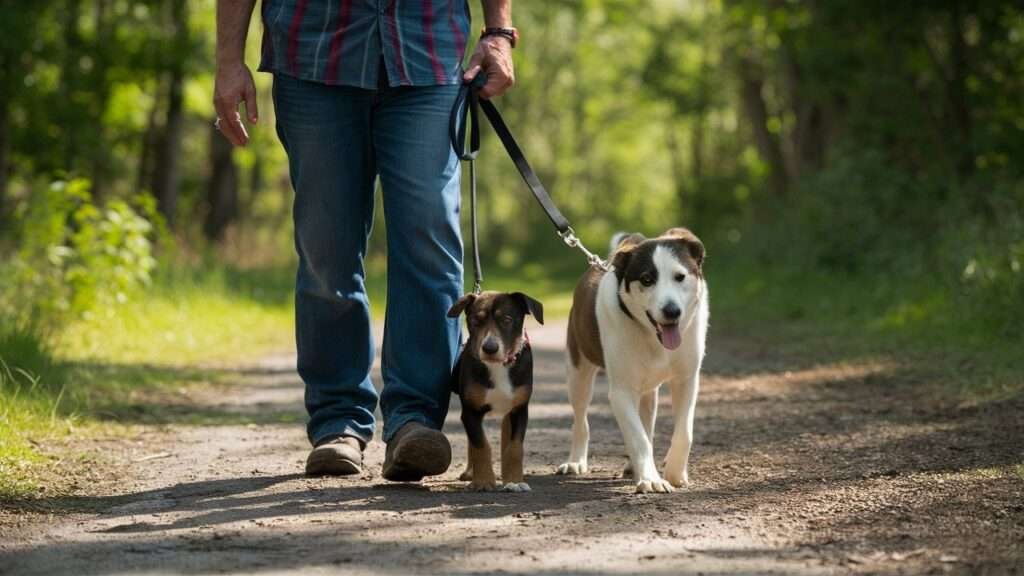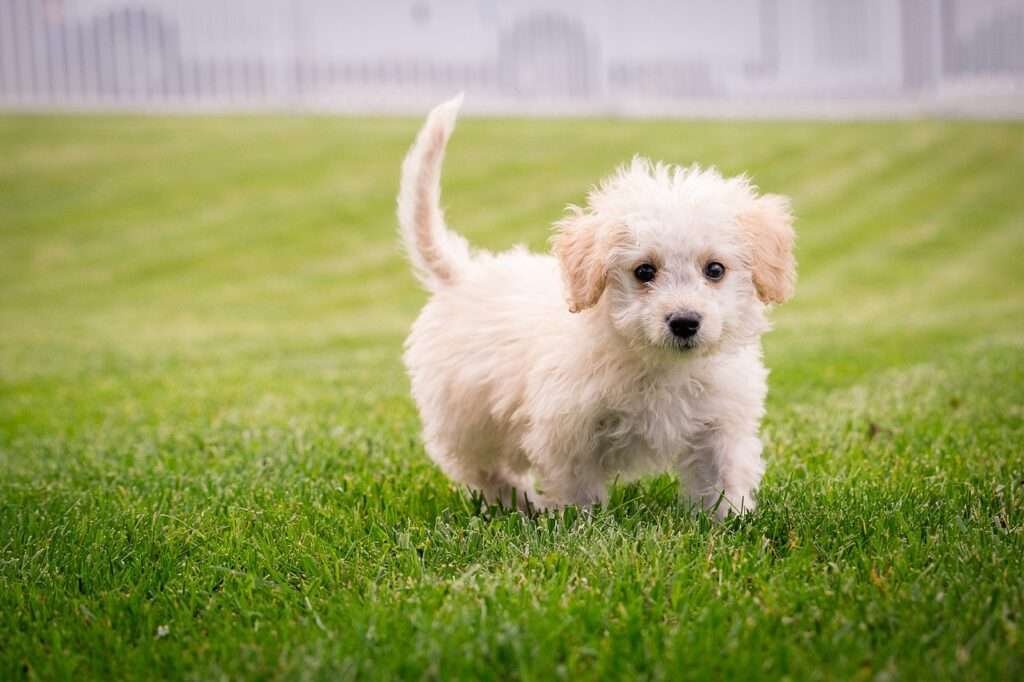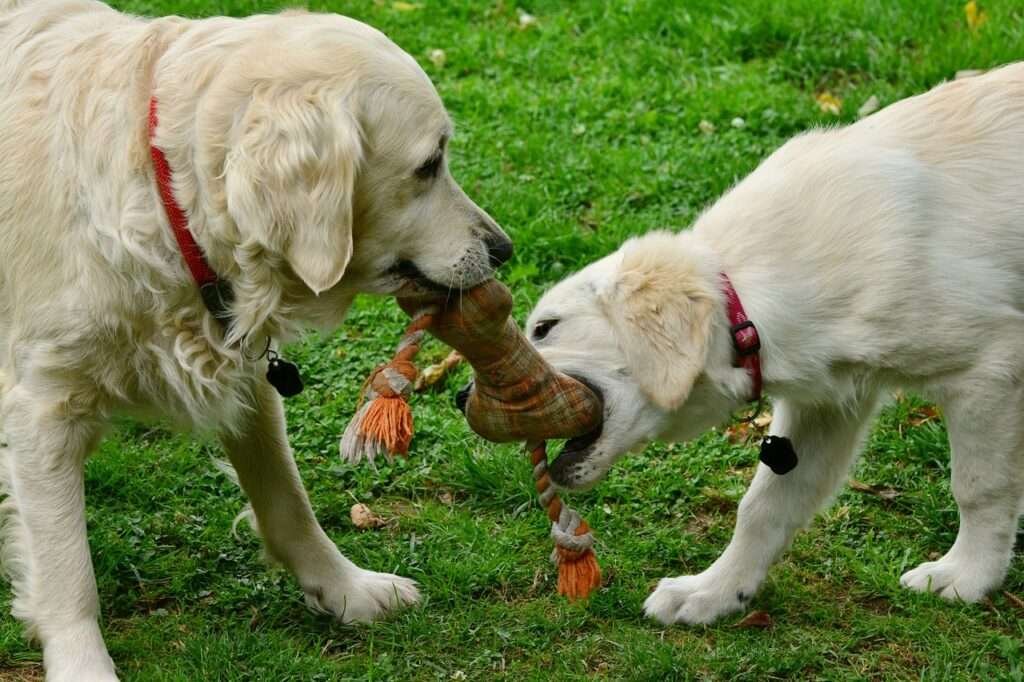Introducing a new puppy to your dog can be a rewarding experience that strengthens the bond between you and your pets. Adult dogs are better teachers than humans, so let the older dog teach the puppy the rules and systems. Gradually, both dogs will become members of the same pack and build a harmonious relationship. Remember to be patient, stay calm, and celebrate the small wins along the way. With time and effort, your dogs can become great companions and enjoy a happy, peaceful coexistence.
Table of Contents
ToggleKnow Your dog well
Before bringing a new puppy home, assess your current dog’s temperament and behavior. Consider the following questions:
– Is your dog generally friendly with other dogs?
– Does your dog have any history of aggression?
– How does your dog react to new situations and changes in routine?
Understanding your dog’s personality will help you anticipate potential challenges and plan accordingly.

Some important Advice
Sometimes the older dog may growl at the new puppy, and they don’t seem to be happy. First and foremost, never leave a new puppy and older dog alone unsupervised. Most well-socialized older dogs will give a “puppy pass” to pups under 6 months. This means the older dog will allow the younger dog to play, sometimes roughly, and will gently correct them. This is good and appropriate. The older dog may even let the puppy bite, tug, and pull on them without reacting. Usually, around the 6-month mark, the older dog revokes this puppy pass and may start limiting that behavior from the pup. This means the older dog might get a little more barky, growly, and snarky towards the puppy. If things escalate, it means that key signals from either the puppy or the older dog were missed. Understanding canine body language and communication is very important in dog ownership, especially in interactions with another dog. A wagging tail doesn’t always mean a happy dog! Tail position, ears, head, and eye direction all play a part in understanding how your dog is feeling.
The First Meeting
1. Choose a Neutral Location
For the initial introduction, choose a neutral location where neither dog feels territorial. A quiet park or a neighbor’s yard can be ideal. This helps minimize any territorial behavior and allows both dogs to meet on equal footing.

2. Keep Both Dogs on Leashes
Keep both dogs on leashes during the first meeting to have control on both of them. Ensure the leashes are loose enough to allow the dogs to move freely but tight enough to intervene if necessary. Allow them to sniff and investigate each other while you observe their body language.
3. Observe Body Language
Make sure both of them are on their best behavior. We don’t need the puppy jumping on top of and disrespecting the bigger dog. We also don’t need the bigger dog exerting his dominance or being too rude and too rough with the little puppy. Watch for signs of positive or negative body language. Positive signs include relaxed posture, wagging tails, and play bows. Negative signs include growling, stiff body posture, and raised hackles. If either dog shows signs of aggression or extreme fear, calmly separate them and try again later.
4. Keep the First Meeting Short
Limit the first meeting to a few minutes. If the interaction goes well, you can gradually extend the time in future meetings. If there are any signs of tension, calmly separate the dogs and try again later. Ending the meeting on a positive note is crucial.

Top Tips to Consider Before and After Introducing
Pre-Meeting Exercise
This means taking the older dog for a walk to get some energy out before meeting the puppy. Ensure the puppy has also had some exercise before meeting the older dog. We don’t want two revved-up dogs engaging in play without first expending some initial pent-up energy. Keep in mind there will be an adjustment period for all dogs.
Appropriate Behavior and Monitoring
This is good and appropriate. The older dog may even let the puppy bite, tug, and pull on them without reacting. Usually, around the 6-month mark, the older dog revokes this puppy pass and may start limiting that behavior from the pup. This means the older dog might get a little more barky, growly, and snarky towards the puppy.
Again, monitor play between the two at all times to prevent incidents or fights, but allow the older pup to communicate. Never scold your older dog for any interaction with the puppy. (Whether you deem it appropriate or not.) This can create a negative association with the pup, which we don’t want.
Reading Canine Body Language
If things escalate, it means that key signals from either the puppy or the older dog were missed. Understanding canine body language and communication is very important in dog ownership, especially in interactions with another dog. A wagging tail doesn’t always mean a happy dog! Tail position, ears, head, and eye direction all play a part in understanding how your dog is feeling.

Play Behavior and Neutral Ground
During play, we don’t want to see either dog persistently chasing while the other tries to get away! An even game of tag back and forth, or being calm in each other’s presence, is ideal! If possible, both dogs should meet on neutral ground after they’ve been well-exercised.
Expecting Setbacks and Training Basics
Expect setbacks anytime the environment changes, such as a new dog entering the home. This means your older dog may revert to some puppy behaviors, like having accidents in the house. You may need to return to basic training with the older dog while working on foundational skills with the new puppy. Ensure they have their own space and keep training at each dog’s own pace. Never rush training for either dog, as this can create negative associations and setbacks.
Separate Crates and Safe Spaces
Now, something else to consider… We never put two dogs in the same crate! You might think putting your new pup in the same crate as your older dog will help them bond and feel like they are with a littermate, but this can be very dangerous. It’s important for each dog to have their own space to relax and take a break from each other (and even you!). This isn’t to say they shouldn’t have time to interact, snuggle, and bond. When your new puppy and older dog are interacting, frequently reward and praise calm behavior from both pups. It may not be natural for either the puppy or adult dog to take breaks from playing on their own.
Managing Playtime and Breaks
Their adrenaline will be pumping, and they will be excited to interact. It would be like you taking two bites of your favorite food and then stopping… yeah, that isn’t going to happen. The same goes for two dogs playing together; it’s too much fun to stop after only a few minutes. They need help to determine when to take a break. You might need to positively and proactively intervene and create “Pauses in Play.”
Handling Over-Excitement
If either dog is escalating and becoming too excited, separate them completely in different rooms. We call this giving the dogs a brain reset. Let them cool down and refocus. A frozen filled Kong or West Paw Toppl can be a great cool-down activity after interactions with each other.
Duration of Play Sessions
We typically say that play sessions should be about 10 minutes at a time. Anything longer and both dogs could get escalated, overstimulated, and more reactive. Remember, your puppy doesn’t have as much strength as your older dog, and too much strain during play can be bad for growing bones and growth plates. Give those busy toys and other toys to your dogs separately, not near each other. This helps the pups settle, as licking is a calming activity, and it creates a positive association with interacting.
Exercise and Energy Management
Ensure both pups are well-exercised beforehand and don’t have tons of pent-up energy when interacting. Playtime should be productive, not a crazy pinball fest with adrenaline pumping so hard and fast that all impulse control is lost. Your new puppy will likely need a potty break 5-15 minutes after play has begun. Get them out before they have an accident, which means interrupting play. Your puppy will be like a little kid learning to potty train, having an accident because they didn’t want to stop playing or realized at the last second they needed to go. If you need help with potty training your puppy, grab the free New Puppy Starter Kit from the description below this video. It includes a potty training lesson and other tips for new puppy owners.
Easing into Unstructured Interactions
Eventually, as both pups get used to each other, interactions won’t need to be so structured or spaced out. Besides actual interactions, set up training sessions focused on positive exposure from a distance. I demonstrate how to do this effectively in a video about introducing puppies and cats. Watch this video even if you don’t have a cat, as the same techniques can be applied to your puppy and older dog in each other’s presence.
Importance of Impulse Control Training
As a dog parent, you know how important impulse control training is! This means teaching our dogs to think before they react to something they see or want. You will work on impulse control with your puppy over the coming weeks and months. Incorporating these training games around your older pup will help teach the puppy to be calm around other dogs (and vice versa). We have several impulse control training games inside the 30 Days to Puppy Perfection program!
Recognizing Different Personalities
Now, let’s talk about different personalities and preferences. Not all dogs are good candidates for a new sibling. Some dogs may be good with a slightly older pup but not a brand-new puppy. Some dogs are better off being the only dog in the home.
Assessing Your Adult Dog
It is important to understand and recognize your adult dog’s personality before bringing a new puppy home. I’m not saying things have to be perfect with zero friction during this transition. However, if your current dog has health issues, doesn’t get along with other dogs, has behavioral issues, or gets easily stressed by change, a new puppy might not be a good fit.
Misconceptions About Separation Anxiety
A common misconception is that dogs with separation anxiety need a friend or will do better with another dog. Adding a new dog rarely improves true separation anxiety cases. Any unwanted behaviors your current dog practices, your new puppy will likely learn quickly. You don’t want two dogs with separation anxiety or behavior problems, which isn’t fun for you or the pups. Ensure you and your older dog are happy and have a well-balanced relationship before adding a new pup. Puppies are a lot of work! Don’t compare a new puppy to an older dog or hope the new puppy will be just like your well-behaved older dog.
Avoiding Comparisons and Setting Realistic Expectations
It’s possible, especially with training, that your new puppy will be just as great as your older dog. But people often compare their new puppy to the older dog, who knows a thing or two, while the new puppy has a long way to go. Never expect your pup to be quickly trained like your older dog. It takes time, training, and maturing. Also, just because you get the same breed of puppy as your older dog doesn’t mean the pup will turn out like the older dog. Many factors affect dog personality and characteristics, including genetics, environment, and early socialization. Sadly, I often hear frustrations from new puppy owners who can’t understand why their pup isn’t as well-behaved as the older dog. The puppy seems to have more energy and doesn’t train as easily. Each dog has its own unique skills, preferences, and personality. Never compare your dog to others’.
Training the Dog in Front of You
Train the dog in front of you, not the dog you want! So, to recap on ensuring a smooth transition when bringing a new puppy home to your older dog:
1. Always supervise interactions between puppy and adult dog,
2. Educate yourself on canine communication and body language,
3. Don’t scold pups for communicating, including growling and barking,
4. Be proactive about “pauses in play,”
5. Have separate safe spaces, like crates in different rooms, for each pup,
6. Separate the dogs and give enrichment toys to each after play sessions or interactions,
7. Set up exposure training sessions that don’t include playtime,
8. Work on impulse control with both dogs.
Introducing a new puppy to your dog can be a rewarding experience that strengthens the bond between you and your pets. Remember, old dogs are better teachers than humans. Let the dog teach the puppy the rules and regulations. Gradually, both dogs will become members of the same pack and build a harmonious relationship. Remember to be patient, stay calm, and celebrate the small wins along the way. With time and effort, your dogs can become great companions and live happily together.



